
Air Show Report : RNZAF 75th Anniversary Air Show
On March 31, 2012, the Royal New Zealand Air Force at its Ohakea airbase held its 75 year anniversary airshow.
Chris Gee delivers his report and photos of the airshow as well
as Exercise Kiwi Flag 2012.
RNZAF 75th Anniversary Air Show
On the 1st of April 1937 the Air Force Act was passed, marking the start of the Royal New Zealand Air Force becoming an independent service of the defence force. The 75th anniversary of this event was celebrated during March and April this year, with parades, concerts and flying displays held across the country in the weeks surrounding this historic date. The Government had begun a review of its air defence requirements in 1936, led by Wing Commander Ralph Cochrane, who would become the Air Force's first Chief of Air Staff. Cochrane recommended a separate Air Force comprising an Army Co-operation Unit and two medium bomber squadrons for local defence, the defence of shipping lanes and to contribute to the security of the United Kingdom. Between 1937 and the outbreak of war in 1939 the RNZAF grew rapidly, with an order for 30 new Vickers Wellington bombers placed in 1938, and land at Whenuapai and Ohakea purchased to accommodate them.
Almost exactly 75 years later, on the 31st March 2012, it was the honour of the latter of these bases, RNZAF Base Ohakea, to host one of the largest New Zealand air shows of recent times. Between Sixty and Seventy thousand people descended upon Ohakea on the day, far exceeding expectations. This led to a large traffic jam, with some patrons not getting onsite until early afternoon, after most of the flying display had finished. Despite the gridlock, the air show was a great success for the RNZAF, with almost every type of serving aircraft performing flying demonstrations, along with international visitors from allied air forces, as well as civilian and warbird aircraft.
Royal New Zealand Air Force
This was the RNZAF's big day, and seven types of its currently serving aircraft performed flying displays. Unfortunately at the last minute no example of the RNZAF's own C-130H-LEP aircraft were able to attend the show. This was a real shame since with three foreign C-130s in attendance at Ohakea our own Hercules were sorely missed.
NH90 Medium Utility Helicopter
Of particular interest at the airshow was the first public display of the RNZAF's new NH90 Medium Utility Helicopter. The NH90 is still in OT&E (operational Test & Evaluation) with the Helicopter Transition Unit (HTU) at Ohakea, the men and woman of HTU worked tirelessly to make the aircraft available and cleared for display. It is readily apparent just how much of a quantum leap forward in technology and capability the NH90 presents over the UH-1H Iroquois it is replacing.
A total of eight aircraft have been purchased to replace the UH-1H Iroquois, along with one 'attrition' airframe. Although this is not a one-for-one replacement of the type, the aircraft is more than twice as capable as the UH-1H in almost every respect. In the words of the NH90 Flight Commander SQLdr Chris Andrew "This aircraft can carry twice as much payload, twice as far, in a much more survivable airframe and with all the modern communications required to integrate seamlessly with our allies." So far only two examples are in the hands of the HTU at Ohakea, with the rest being delivered over the next few years.
SQLdr Phil Wilson flew the NH90 display with Co-Pilot SQLdr Dan Pizaro and crewmen Flight Lt Tai Cochran and Flight Sgt Chris Wilson. Given the early stage of the testing program the aircraft is in, the display was quite simple, but served to show off this impressive machine to good effect.
A109 'Mako'
Completing the transformation to a high-tech modern helicopter force is the AgustaWestland A109 LUH, now the RNZAF's training and Light Utility Helicopter. Known as the 'Mako' in RNZAF service, the A109 replaces the venerable but outdated Bell-47 Sioux in the training role. All aircrew will now carry out their training on this helicopter before transitioning to the NH90 or SH-2 Seasprite. The A109 will also be used for light operational roles, reducing the need to use the expensive and heavy NH90. Along with the initial five flying airframes and the one attrition airframe, the RNZAF purchased a full flight simulator, on which it is expected that aircrew will carry out 40% of their training. An option exists in the contract with Agusta-Westland for an additional three aircraft. The A109 is equipped with a four-axis auto pilot and a winch. It carries a full communications suite, allowing it to interoperate with other government agencies and act as a communications node for the rest of the NZDF. Underslung from its cargo hook it can carry 500kgs over long distances, or up to 1000kg a short distance.
P-3K Orion
The Lockheed P-3K Orion is the RNZAF's Maritime Surveillance and Response aircraft operated by No.5 Sqn, and performed a capability demonstration as part of its display routine at the air show, dropping a rescue package to a simulated boat is distress. This magnificent aircraft flew many low and fast passes during its display, along with a 'dirty' flyby with its undercarriage extended and bomb-bay doors open. The RNZAF's P-3K Orions are currently undergoing a modernisation process, with each aircraft in turn being brought up to P-3K2 standard. These extensive upgrades will allow the airforce to operate these aircraft up until 2025, as well as offering the addition of a sophisticated multi-mode radar, along with new electro-optical sensors and new electronic warfare and communications equipment.
Boeing 757
The two Boeing 757-200s that serve with the RNZAF are a far cry from their civilian airliner cousins. These aircraft were highly modified with an engine thrust upgrade, side-loading cargo door, and a modular cargo-handling system that allows the aircraft to fulfil a combination of VIP, cargo transport, aero medical evacuation roles. The aircraft were given air stairs and a crew access ladder for autonomous operations without ground support. A full communications suite was added to bring the aircraft up to modern standards. The B757's display is always impressive, and includes a max-rate take off followed by a wing-over that is not something you will ever see a civilian airliner perform. The aircraft was painted in 75th Anniversary Livery for the occasion.
The Red Checkers
The RNZAF formation aerobatics team The Red Checkers flew many displays up and down the length of the country over the celebration period, including over many regional centres where they would not usually be seen. The Red Checkers fly the Pacific Aerospace CT-4E Air trainer, the ab-initio trainer that all aircrew must pass through in order to gain their wings. 13 Aircraft were leased in 1998, powered by the Textron Lycoming AEIO 540. The Red Checkers performed many of their signature manoeuvres at the air show, including the Mirror and, as the finale to the airshow, the Spaghetti Break.
Bell 47 Sioux
The B47G-3B-2 Sioux has been the RNZAF's helicopter trainer since 1965, and were the very first helicopters flown by the RNZAF. Five examples remained by the time of their recent retirement after being replaced by the A109. One example is kept in flying condition, and its display is always popular, and is usually performed with the theme from M*A*S*H* playing in the background... The Sioux was a very unforgiving aircraft, leading to the adage "If you can fly a Sioux you can fly anything".
UH-1H Iroquois
The UH-1H Iroquois is instantly recognisable and has been serving the RNZAF since 1966. The RNZAF currently operates 13 aircraft, which will remain in service for a few years longer as No.3 Sqn slowly transitions to the NH90. Four UH-1Hs flew together in a capability display that included the fast roping of soldiers onto the runway, and the dropping of two cars onto the airfield. These helicopters will leave behind an enduring legacy when they retire, but they still have some work to do yet!
SH-2G Super Seasprite
The Royal New Zealand Navy operates five Kaman SH-2G Super Seasprite helicopters, which are flown by naval pilots but maintained by air force personnel. The Seasprite performs many roles for the RNZN, including ASW/AShW combat missions, surveillance, SAR, VIP and utility tasks. They can operate off the two ANZAC Frigates and the Multi-Role Vessel HMNZS Canterbury, as well as the two Offshore Patrol Vessels. During the Seasprite display some of its capabilities were displayed, including the 'rescue' and hoisting of a stranded sailor.
Exercise Kiwi Flag 2012
Coinciding with the 75th Anniversary Air Show was Exercise Kiwi Flag 2012, a multilateral tactical air mobility exercise, which drew contributors from the USA, Australia, Singapore and France. Based out of RNZAF Base Whenuapai, the exercise saw fixed wing tactical training with tasks including aircraft mission generation and recovery, low-level navigation and the airdrop of cargo and personnel to Kaipara and Raumai Air Weapons Ranges. Running from March 24 to April 5 the exercise formed a key part of readiness training for the New Zealand Defence Force, and aimed to improve interoperability between the various participants. The international visitors were very keen to make good use of New Zealand's excellent and varied low flying terrain.
The participants flew all over the country during the exercise, from Southland to Northland. Squadron Leader Andy Scott, the RNZAF exercise director, commented that "Only here in New Zealand can you have such a diverse range of low-flying terrain within such a small area. The foreign pilots find the type of flying they can do here thrilling and challenging. The fact they also get to show off their aircraft at our 75th Anniversary Airshow is a real bonus for everybody." Indeed, the visiting aircraft attracted so much attention in the static displays that each aircraft had long queues of people waiting to board them.
USAF C-17
The USAF brought 70 aircrew and two Boeing C-17 Globemaster III to the exercise. These aircraft are relatively common here with regular C-17 flights out of Christchurch in support of the USA's Antarctic Program, but this provided a great opportunity for many people to see the inside of the spaceous aircraft.
RAAF C-130J
The RAAF's C-130J aircraft drew a lot of attention in the static display line, as this aircraft is in the running as the replacement for the RNZAF's C-130Hs around 2020. The C-130J is far more than just an upgrade to the existing Hercules airframe, being completely new-built and with significant engine and performance advances over the original.
RSAF KC-130H
A very rare visitor to these shores was the Republic of Singapore Air Force KC-130H on static display at the airshow is one of six operated by the RSAF, and is capable of refuelling other aircraft, or helicopters, in flight. The air-to-air refuelling equipment was removed from the aircraft for this visit; since it was not required for the Kiwi Flag exercise it was participating in here. New Zealand has a strong relationship with the defence forces of Singapore, with their army carrying out a lot of training at Waiouru.
USMC KC-130J
Possibly the first visit to New Zealand by a United States Marine Corps aircraft, the USMC KC-130J is capable or air-to-air refuelling other aircraft and helicopters in flight using its 'Hose & Drogue' AAR pods. The C-130 is a very versatile tanker aircraft, offering a god payload, and can fly fast enough to refuel jet fighters, but also slow enough to refuel helicopters. Different cables and drogues needed for each mission, so the aircraft will either carry 'fast' or 'slow' pods depending on the mission. According to the crew it is very rare to carry both a fast & slow pod on each wing, though it can be done.
AdlA C-235
This EADS/CASA C-235 of the Armée de l'Air (French Air Force) operates out of New Caledonia, and is a frequent visitor to New Zealand. It is of particular interest to the RNZAF as it investigates the possibility of a new two-tier approach to its airlift capability, part of which this aircraft would be perfect. Capable of tactical air-lift, medivac and multi-engine training, the C-235 or its larger C295 cousin make ideal platforms to fulfil the RNZAF's requirements as its C-130s approach the end of their lives. Working alongside a larger airlifter such as the Airbus A400M, Lockheed Martin C-130J or Embraer KC-390, the EADS/CASA C-235 could provide a very cost effective alternative to using expensive heavy lift aircraft on smaller mission.
Kiwi Blue
Kiwi Blue is the RNZAF's Parachute demonstration team, and are drawn from the Parachute Training & Support Unit. With the no-show of the RNZAF C-130 Hercules this year, they were forced to jump out of a more old-fashioned platform, the C-47. After a short freefall they formed up into a stack, with Warrant Officer Kevin Pope trailing a large Air Force Flag.
Foreign Displays
International visitors to the airshow included the AT-6 Texan II from Hawker Beechcraft and F/A-18 Hornets plus Boeing Wedgetail from Australia, plus the participants of Exercise Kiwi Flag 2012 as explained above. The second USAF C-17 also took part in the flying display.
C-17 Globemaster III
The USAF C-17 put on an impressive routine, showing off many of the attributes that make this huge aircraft so successful. Its Short Take Off & Landing (STOL) abilities were obvious as it lifted off using a very small amount of runway for an aircraft this size, then proceeded to land again and reverse using what must have been only twice its own length of runway. The C-17 can carry over 70000kg over vast distances, and operate from unprepared airstrips. To give a sense of scale to this behemoth, it can fit the entire payload from a C-130 Hercules onto its rear loading ramp alone, and still lift it up and down...
F/A-18 Hornets
The big draw card for many at the airshow was the participation of no less than six Royal Australia Air Force F/A-18A Hornet fighterjets from 77 Sqn, supported by one RAAF C-17. The Hornets flew impressive displays, giving an exhilarating solo routine as well as a four-ship formation flight. During its solo routine it displayed its incredible aerodynamics, especially during the 'Square Loop' manoeuvre, with the aircraft performing near right angle turns at each corner of the loop, producing some great looking contrails as its control surfaces worked overtime to keep the aircraft stable. The formation flight was incredible close, with the wings overlapping. This is a tactic carried out to make the flight look like one large target to hostile radar rather than four separate aircraft.
AT-6 Texan II
A new international visitor to the airshow was the AT-6 Texan II, a small advanced two-seat trainer that was here to demonstrate to the RNZAF. Hawker Beechcraft is offering its Texan II as replacement for the B-200 King Air and to fulfil the new Advanced Pilot Training Aircraft requirement. The aircraft was flown by test pilot Michael 'Gameshow' Rambo, and supported with a background commentary straight out of the sales brochure.
Wedgetail
A truly rare, not to mention expensive, visitor to New Zealand for the 75th Anniversary was the RAAF 'Wedgetail' AEW&C aircraft. Based on a Boeing 737 airframe, the system incorporates the Northrop Grumman M-AESA (Multifunction Active Electronically Scanned Array) radar. This very capable radar can track multiple targets the size of golf balls out to over 400km in air-to-air mode, as well as perform surface scans. This aircraft is far more than an airborne early warning system; it can also act as a command post, communications hub and has significant electronic warfare and intelligence gathering capabilities. Though it was on static display at the airshow it was kept well under guard and no civilians were allowed inside it.
Warbirds
TBM Avenger
Certainly the most important warbird to fly at the airshow was the TBM Avenger, which is recently returned to New Zealand after a many years in Australia. After being purchased by Brendon Deere the aircraft was flown across the Tasman by Guy Stevenson, via Norfolk Island for a fuel stop. The Avenger now resides at Ohakea in Brendon Deere's impressive 'Biggin Hill' hanger. The Avenger is going to be repainted back into RNZAF markings, and will be a welcome re-addition to the already flourishing Warbirds scene in this country. The Avenger was the biggest single engine aircraft to be used by the RNZAF. Up close you get a real feel for the huge size of this aircraft, and it is difficult to image them being operated from the small (by today's standards) aircraft carriers during WWII. Guy Stevenson performed a lovely and sedate display in the Avenger, with plenty of low passes, with the Bomb Bay door open, and a simulated high angle of attack Carrier Landing, including two 'Landing Officers' on the runway who signalled the aircraft in its approach.
P-51D Mustang
Grahame Bethel's P-51D Mustang has been displaying at air shows in New Zealand for many years, but still captivates the audience. Graham's low and fast knife-edge passes are legendary, with his immaculately maintained and displayed aircraft always impressing both seasoned airshow goers and first-timers alike. The P-51D was one of the most successful aircraft of WWII, and was in service until 1957 with the RNZAF who operated 30 examples.
Spitfire
There were two Supermarine Spitfires at the 75th Anniversary Airshow, both of which have flown together during many recent New Zealand air shows, and have always proven to be a crowd favourite. Unfortunately this time around schedule pressures meant the two could not fly together in their planned routine. Brendon Deeres Spitfire Mk.IXc PV270 was flown by SqnLdr Sean Perrett, who is also the Flight Commander for the RNZAF Historic Flight. A former RAF Harrier pilot, Sean is now an instructor for the RNZAF. Doug Broker flew his twin seat ex-SAAF Spitfire TR.9, but once they were both airborne their display was called off, which was a real shame since these two Spitfires in the air together is a real sight to behold.
FG-1D Corsair
Keith Skilling is one of New Zealand's most experienced display pilots, and for many years he has flown the sole airworthy ex-RNZAF FG-1D Corsair owned by the Old Stick and Rudder Company. His display is always breathtaking and this day proved no exception. With it crooked-wings and huge propeller this aircraft is instantly recognisable as 'The Whispering Death' Corsair that wreaked havoc on the Japanese in the Pacific Theatre of WWII. The RNZAF operated 424 of these aircraft during the war, which were so successful that they were operated by some air forces into the 1960s.
Hawker Hunter & Tiger Moth
Having returned to the skies recently the Hawker Hunter is always highly anticipated, and Dave Phillips puts on an outstanding display of low and fast passes in the this very loud and impressive jet aircraft. But it was his later display in the Tiger Moth that really cemented Dave's reputation as a virtuoso pilot. In what seemed like the ultimate juxta-position, Dave Phillips climbed out of the Hawker Hunter and into a Tiger Moth. Seemingly always on the edge of stalling, the Tiger Moth twirled around the sky in manoeuvres that looked sure to fail any second. As an example of the perfect use of energy and lift, the Tiger Moth display silenced many in the audience. Surely you can't do THAT with a Tiger Moth?
BAE 167 Strikemaster & DH 115 Vampire
Another jet that has recently returned to the skies of New Zealand, the BAE 167 Strikemaster, was flown by Dave Brown. The aircraft was purchased by Brett Nichols in 2010 and is covered in a bright green 'V' sponsorship that helps to keep its in the air. 16 Strikemasters entered service with the RNZAF in 1972, and remained in service for 20 years. It was joined by the De Havilland DH115 Vampire, which also has a long history with the RNZAF, staying in service for 22 years. Brett Emeny's immaculate example is a regular on the NZ airshow circuit, yet never fails to impress with its gleaming silver finish and unique sound.
Other Performances
Formation Displays
Lead by A320 Pilot and Warbirds Association President Frank Parker, the Roaring Forties flew a range of thrilling aerobatics while in formation with their five Harvard aircraft. This team, and the Harvard especially, have a long history here in New Zealand, and are always a welcome sight (and sound!) to behold. The Yak-52 Team has a reputation for an extremely tight and impressive display. The airmanship is obvious as this team, drawn from various civilian owners and syndicates, comes together to fly manoeuvres in meticulous wing-tip-to-wing-tip formations. In the finale of their display, two different formations rejoin as they fly toward the crowd then perform an impressive split-break.
Aerobatics
Phill Hooker flew the Falcomposite Furio, a modern and capable kitset aerobatic aircraft rated to +6/-4 G's. Doug Brookers extreme aerobatics display in the MX-2 has to be seen to be believed, throwing his extremely powerful and light aircraft around the sky with precision in an exercise in the laws of physics and superb airmanship. The Thunder Mustang built with modern materials and a V-12 engine out performs the original in almost every respect as Simon Gault showed. Tauranga's Gyrate brought the Calidus Fern Gyro to the airshow, and its exhilarating display turned many heads and dispelled many myths about the type.
Classics
New Zealand's aviation scene provided the airshow with additional highlights. The simulated dogfight between WW1 replicas, the Bristol F.2B flown by Andrew Vincent and the Fokker D.VII flown by Scott Mackenzie, was a hit with many at the airshow as they twirled around each other reliving the era of 'real' flying. Halet Griffin's DHC-2 Beaver, one of the last operational top-dressing Beavers in the world, gave a sedate and graceful display. The two airworthy DC-3 Dakotas flying in New Zealand flew together at the airshow, as well as offering sightseeing rides.
Commercial
Made by Pacific Aerospace Corporation in Hamilton, NZ, the PAC750 XTOL continues to be a success story, and even has recently been assessed by SOCOM in the USA. Its STOL capabilities were shown off by Roger Cruickshank. Attracting much attention in the static display, Air New Zealand brought its brand new Boeing 777 to the show, featuring new 'Sky Couch' economy seats and All Black paint scheme.
Wrap-up
With Air Force events held alternatively at Whenuapai and Ohakea every two years, one would expect the next event to be in Auckland in 2014, by which time the NH90 helicopters will be fully in service, and possibly a decision made about the new advanced trainer. The Air Force Air Show Organising Committee, lead by Wing Commander Phill Bedford, have really set the bar high for the next event. Hopefully they learn from the traffic problems this time around and also make the next one free to NZDF personnel rather than making them spend 10 NZD getting into their own airshow!
Report and photos by Chris Gee ( view portfolio )
Made possible by Kiwi Flyer magazine.








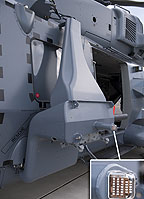







































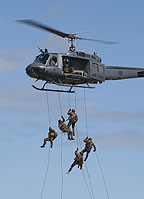
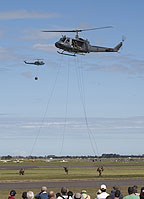
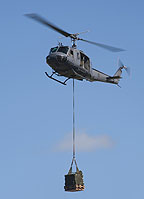


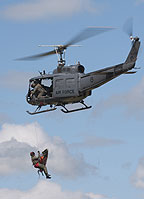
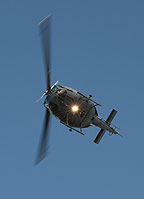
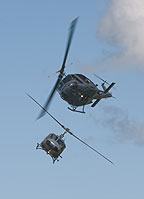


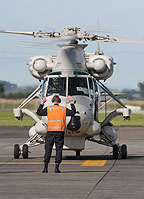
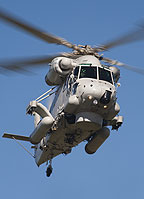
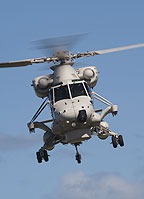
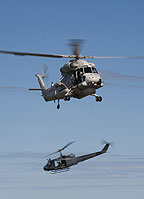


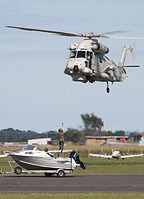
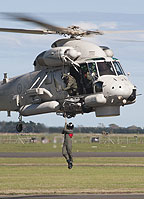


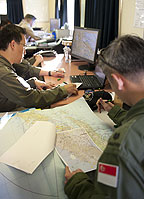






























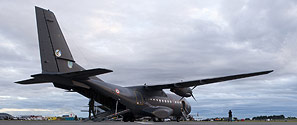





















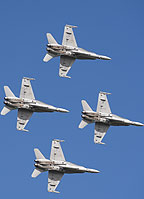
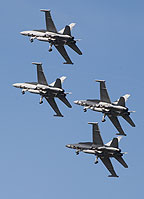
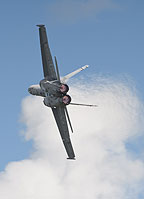






















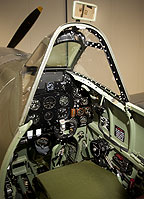






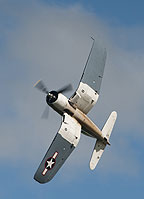







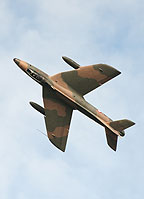







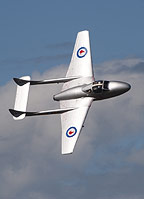














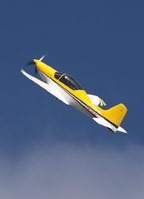
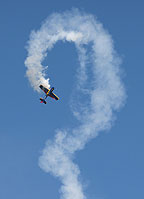
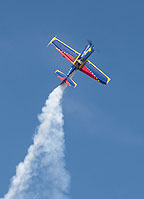


















 Back to Index
Back to Index